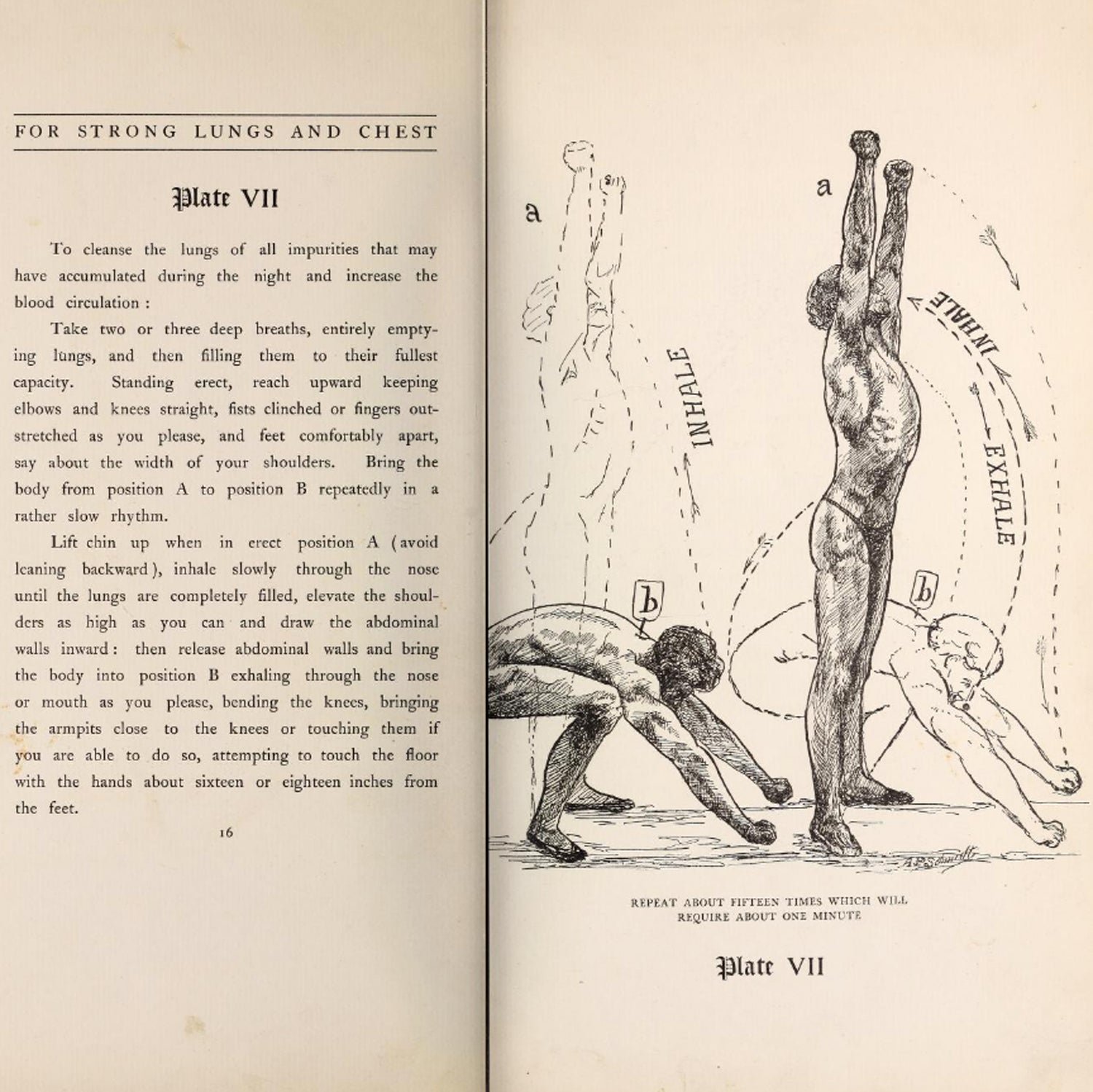The strongest guy you’ve never heard of is named Adrian Peter Schmidt, a 5'2″, 126-pound failed French artist born in 1872.
In art school, the story goes, Schmidt became enamored with muscular Greek statues, moved to New York City, opened a gym, and developed obscure training methods to look like Hercules. Schmidt’s exercise techniques allegedly allowed him to press more than 1.5 times his body weight overhead and perform ten consecutive one-finger pull-ups until age 68. Schmidt also claimed his approach cured his headaches and reduced his sinus inflammation.
Schmidt developed mail-order fitness courses and exercise machines and gained notoriety teaching around New York City and on national strength circuits. Lucky for us, he encapsulated his ideas in a book he self-published in 1901, . “My purpose is a very practical one,” Schmidt writes in the introduction. “To suggest a simple plan for exercising in the morning, which will take only ten or fifteen minutes…and will put you in a condition to go throughout your daily work with ease and pleasure.”
Going through our daily grind with ease and pleasure? We were skeptical. The history of American fitness is littered with wasted time and unmet expectations.
“I would actually say there isn’t anything in here that’s outright wrong, methods that you should never do.”
Turns out, Schmidt was right about a lot. “I would say there isn’t anything in here that’s outright wrong, methods that you should never do,” says Cliff Harski, director of training for , a tech-heavy boutique fitness studio chain with locations around the country.
Harski points at how Schmidt’s thesis—“A due proportion of exercise is essential to the perfect working of the functions of the physical and mental man”—gets to the heart of why you should exercise and is supported by research. The largest jab you can take at the book, says Harski, is that its author overestimates just how beneficial some of his methods might be, such as his claim that ankle circles can cure headaches.
We poured over the book with our experts, analyzing each exercise and scrutinizing Schmidt’s claims. We tried the good stuff. Here’s what we found.
Expand Your Body, Breathe Deeply, Then Cower
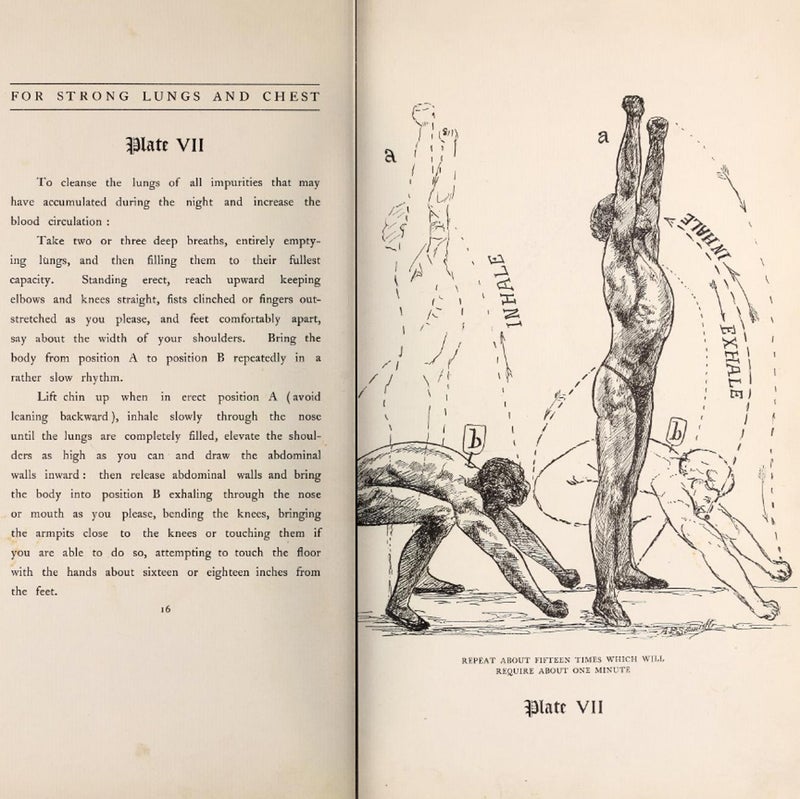
Schmidt says that “for strong lungs and chest,” one should perform an exercise where you stand as tall as possible, lifting your arms and chest as you fill your lungs with air. Once you can’t inhale anymore, you forcefully exhale as you descend into a squat-like position.
“Most people overlook the power of deep breathing,” says Greg Spatz, a doctor of physical therapy with in New York City. “But full deep-breathing cycles in the squat position is something I recommend for a lot of my patients.” The exercise can help reduce the tension most people carry in their lower back from standing and sitting upright all day. Loosen those muscles, Spatz says, and you might avoid back pain.
Our Verdict: While we’re not sure if the move “cleansed” us, as Schmidt claimed it would, we can say going from the tall, open standing position on the inhale to the deep squat position on the exhale got our blood pumping and stretched tight areas like our lats and lower back, as Spatz mentioned. Syncing our breath and movement also had a relaxing yogic effect.
Fall on Your Ass with Grace
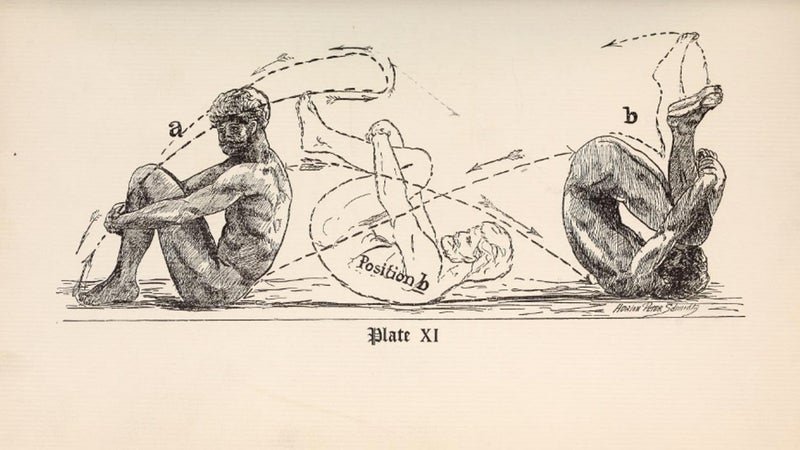
If this move, which Schmidt calls “Natural Massage Exercise for Exhilaration,” looks like it was pulled from the Olympic rhythmic dancing event, that’s because the move’s roots are in gymnastics, says Spatz. “The exercise is reminiscent of the classic gymnast position called the hollow position,” he says. In it, your body is shaped like a wide-open C, which positions your ribs and pelvis in a way that you can fully engage all your muscles, boosting strength and reducing your injury risk. Spatz says learning to perform the exercise well might improve your strength and stability, as well as performance in higher-level exercises like push-ups, pull-ups, and even difficult gymnastic movements like levers.
Our Verdict: Exhilarating? Yes. Pretty? No. This was as much an exercise in cracking bones and lighting up muscles we didn’t know we had. But we could better control the move after doing the exercise a few mornings. We felt looser and experienced low-level, day-after abs soreness, hinting that something good was happening.
Heel Raises
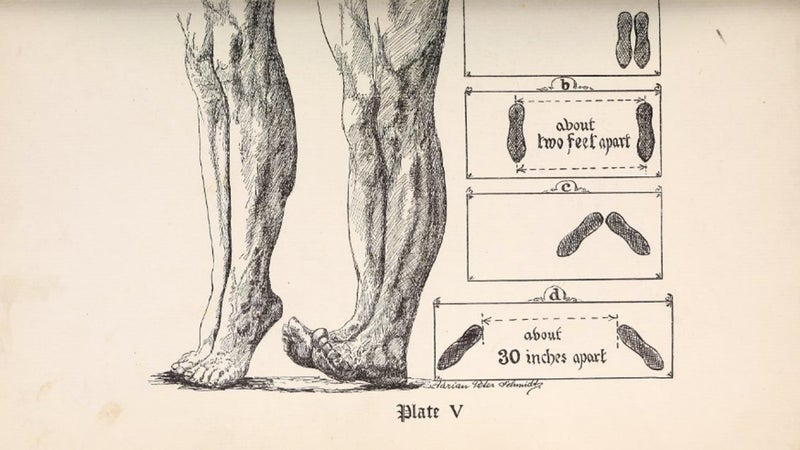
Basic heel lifts are meant “to stimulate the circulation in the lower extremities and develop the strength of their muscles,” according to Schmidt.
This exercise is ideal for desk workers and runners, says Harski. “People rarely challenge their lower legs,” he says. “Strengthening those muscles can help protect your knees and improve your ankle mobility.” That may help you squat better and protect your joints as you train for your next trail race.
Our Verdict: We overdid this one and felt some calf soreness the next day, but that likely indicates Harski is right—our lower legs needed work. Schmidt also says this exercise is good for developing “shapely ankles.” The verdict is still out on that.
Ankle Circles
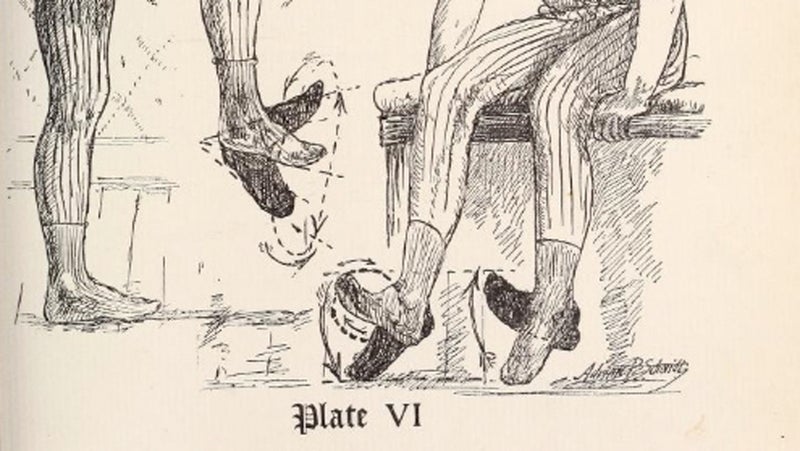
Harski pointed out that moving your ankle through a full range of motion by drawing circles with your toes could produce good circulation and reduce ankle tightness, a common cause of knee and hip issues. But he’s suspect of Schmidt’s claim that the move will cure “headaches resulting from various causes, catarrhal inflammation of the mucous membrane of the nostrils, etc.”
Our Verdict: It’s allergy season. We did ankle circles for a minute on each foot. Unfortunately, our nose is still stuffed, but our ankles did feel loose.
Shoulder Circles and Wasting Paper
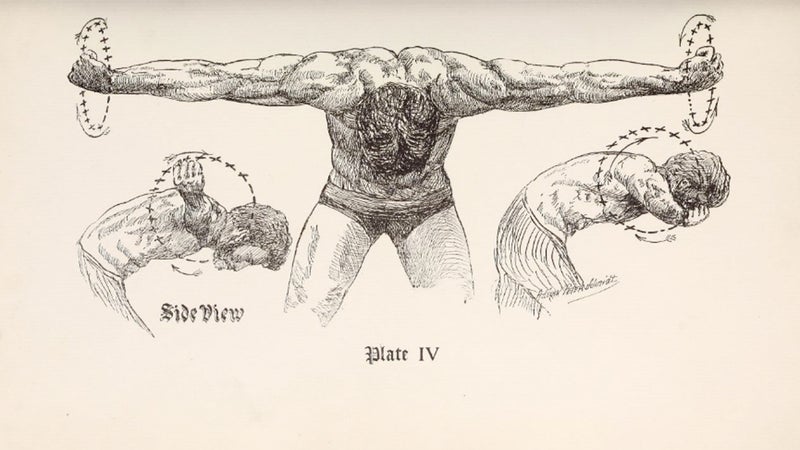
Spatz says Schmidt’s claim that shoulder-circle variations and paper wadding will build strength and durability—or, more specifically, “powerful grip and supple, strong shoulders”—is a stretch. “The exercises are fine,” he says. “But they just aren’t intense enough to build strength.” You may potentially see some more endurance in those muscles, but if you want strong shoulders and grip, try the overhead press and farmer’s walk. Both exercises allow you to use a heavy-enough weight.
Our Verdict: Shoulder circles are something we did back in gym class. We didn’t get jacked shoulders then, and our shoulders didn’t feel any stronger this time. As for the paper-crumpling exercise: lots of noise, not much bang.
Crunches and Sit-Ups
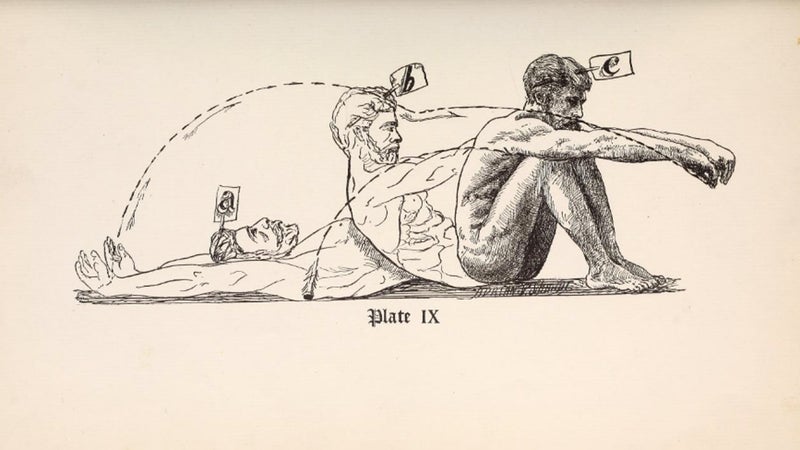
Schmidt’s ab exercises—standard crunches and sit-ups—might raise the eyebrows of some of the world’s best spinal researchers, who say that repeatedly flexing your spine can weaken your spinal disks, potentially leading to a disk bulge. But the larger issue, says Harski, is Schmidt’s claim that “stout men will lose a great deal of superfluous fat around the waistline in attempting this exercise, as the increase of strength of the abdominal muscles destroys all fat tissues which hamper their action.”
And the idea that you can “spot reduce” fat by doing exercises that work a certain area was disproved years ago. A better way to lose belly fat: do total-body workouts and lock down your diet.
Our Verdict: We still prefer planks.


